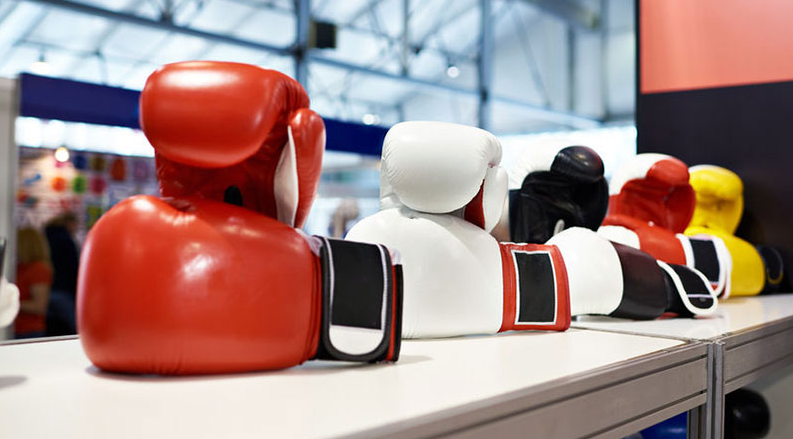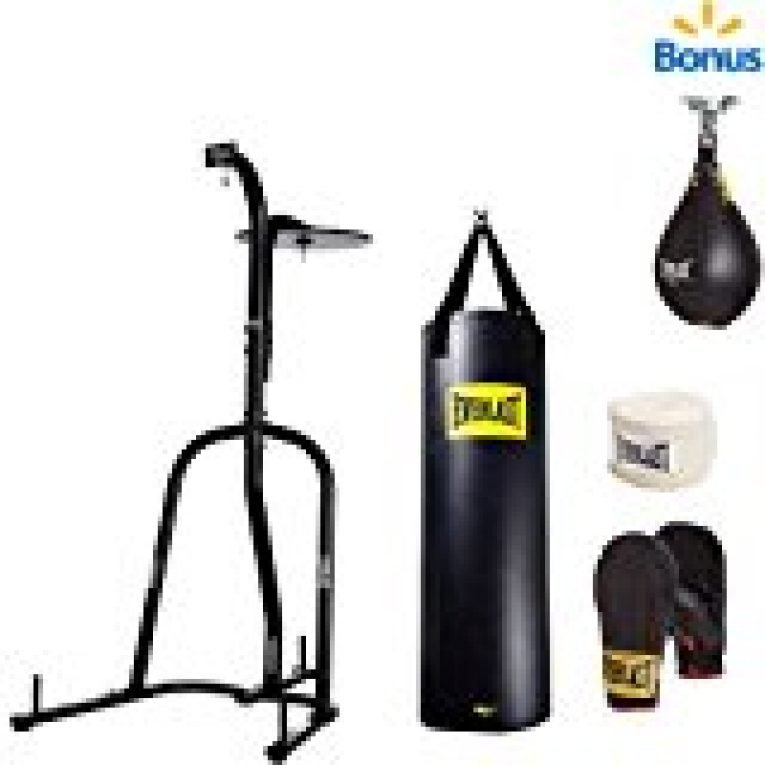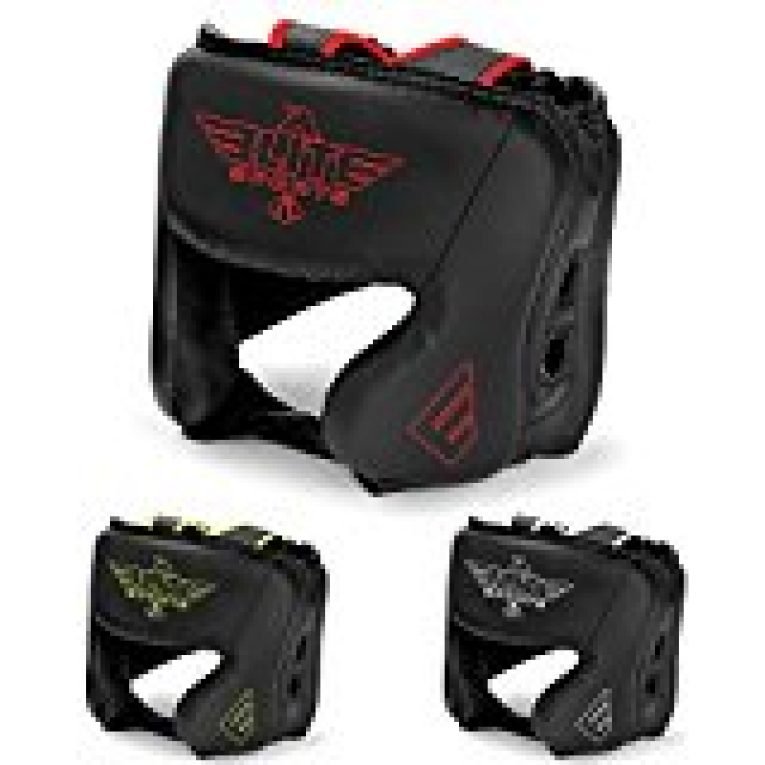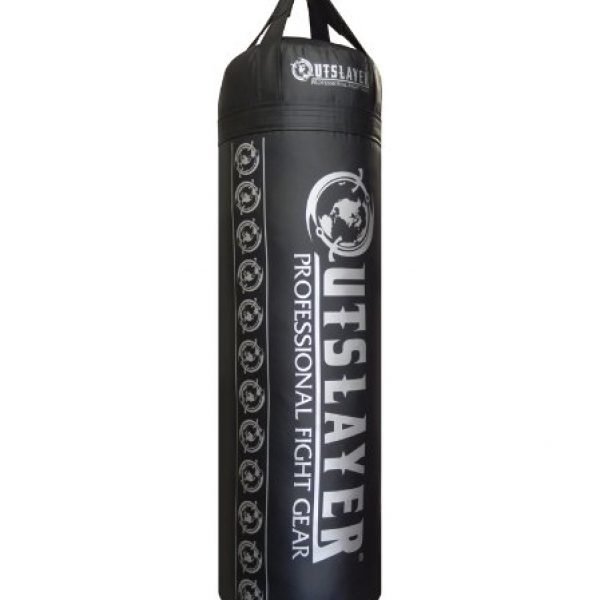
Boxing equipment - you need this protective equipment for boxing and these tools make your boxing training more effective.
Boxing is a martial art and good protective equipment is particularly important for every martial artist, because it protects against injuries and enables optimal training. You can find out which equipment you need to practice boxing here. We'll also tell you which tools will make your training even more effective.
What Boxing Equipment Do You Need for Boxing Training?
Boxing is a contact sport and some protection equipment is required for training and competition, because in martial arts there is a high risk of serious injuries without suitable protective equipment. In addition to boxing gloves and a mouthguard, boxing bandages are essential for boxing. In the amateur fights, head protection is also necessary and mandatory.
Additional protective equipment includes groin protection (men) and chest protection (women). The use of boxing shoes is also highly recommended because it protects against injuries. There is also a lot of useful boxing equipment that makes training more effective and pleasant. This includes various tools such as a sandbag or a boxing dummy. Punching balls, double-end balls, speed balls and punching pears also optimize your training and improve your performance.
Boxing Equipment Basics
Boxing is a martial art and it is important to protect particularly endangered areas well so that serious injuries do not occur. Boxing gloves, boxing bandages and a face mask, for example, are essential.
Boxing Gloves
Boxing gloves are the indispensable tools of many martial arts. A good boxing glove protects your own hands on the one hand and also prevents injuries to your sparring partner. Boxing gloves are absolutely necessary whether for sparring, in competition or when training on a punching bag or with claws. Boxing gloves protect against numerous injuries from sprained wrists and overstretched tendons to broken fingers. There are a few things to consider when choosing suitable gloves.
The Intended Use Decides Which Boxing Gloves You Need
On the one hand, of course, it's about the purpose or the sport. Do you need classic boxing gloves, MMA gloves or kickboxing gloves? A distinction can also be made between the following situations: training on a punching bag, sparring (boxing training with a training partner) and real competition.
Competition gloves must meet certain standards that are prescribed by national and international boxing associations. This applies to the thickness of the filling, for example. As a rule, the weight is also precisely determined in each case and the closure must be made with laces.
Competition gloves are usually lighter than gloves that are used during training. Batting gloves are heavier and are mainly used for training on the punching bag and can also be used for sparring. Special sparring gloves have a thicker padding than the batting gloves. They are similar to the gloves that are used in competitions, but they are a little heavier. This reduces the risk of injuries during training, because the lower the weight of the boxing glove, the faster and harder the punch can be performed.
Size / Weight
Boxing gloves are marked with a weight in oz (ounces). Boxing gloves are basically the same size. The specification "oz" indicates the weight, whereby one ounce contains about 28.35 grams. As a rule of thumb: the smaller the ounce number, the lighter the glove and the harder the blow or the stronger the impact. This is why it is used for sparring and training Gloves with a heavier weight are usually used (12-14 ounces), and gloves with 8-10 ounces are usually used for fights. Initially, you should use a glove between 12 and 20 ounces for training and sparring. 16 oz are considered good for beginners. However, you have to try this out individually with the glove of your choice.
Boxing Gloves for Women
The biggest difference between men’s and women’s boxing gloves is the size of the hand. Women typically have smaller hands than men, which means that their gloves will fit more snugly.
The best women's boxing gloves typically have a snug fit and are made from heavyweight fabric. They usually feature a padded palm and fingers to protect the hands from damage. Some gloves also include finger extensions that make it easier to punch with accuracy. Additionally, some gloves come with wrist support straps that help to keep your hands comfortable during long bouts of fighting.
Boxing Gloves for Children
Boxing gloves are indispensable and children's hands that are still growing need adequate protection when boxing to avoid permanent damage. As a rule, children wear lighter gloves because the impact force has not yet developed that far. Boxing gloves weighing between 6 and 8 ounces are usually used for children between the ages of 10 and 12. Older children can use boxing gloves that weigh 10 ounces.
Boxing Bandages
If you have chosen a suitable glove, you should not forget the boxing bandages . Bandaging the hands is extremely important as it stabilizes the hand and wrist and protects them from injury. The bandages also absorb sweat. Just like boxing gloves, boxing bandages should be worn for training, sparring and competitions. Not only do they have a stabilizing, cushioning and absorbing effect, but above all they distribute the pressure better so that injuries are avoided. In order for them to perform this important protective function, they must be properly wound.
Mouthguard
A face mask is also compulsory and should be part of your boxing gear, as it not only protects teeth and prevents tooth loss, but also reduces the likelihood of other injuries such as concussion. There are different models: Boil and Bite mouthguards, which can be adjusted at home, double mouthguards for lower jaw, children's mouthguards, protection for braces wearers and professional mouthguards that are individually adjusted at the dentist.
A good mouthguard on the one hand dampens blows through a flexible material and on the other hand distributes the energy of the blow over a larger area. When used and fitted correctly, a mouthguard reduces the risk of concussion and also prevents tooth and jaw injuries. Most often, “boil and bite” mouthguards are used, which are pre-formed and briefly immersed in hot water in order to then be adapted to the individual jaw, mouth and tooth area in the mouth with a short bite. Professionals or athletes who train a lot often invest in an individually adapted mouthguard that is made by the dentist.
Groin Guard
The groin guard is an important part of boxing equipment for both men and women to enable injury-free training. As a rule, the abdominal protection consists of an impact-resistant and pressure-resistant shell, which can be made of a wide variety of materials, from plastic to carbon to titanium, and is selected depending on the type of requirement. Groin protection is not absolutely necessary for sandbag and claw training, but it is mandatory for sparring.
In the professional sector, stable groin protectors made of leather are usually used, which also cover the side area and the kidneys and thus guarantee even more safety. Depending on the boxing style, a simple groin guard that is laced is sufficient. For more dynamic styles such as Muay Thai, a groin guard integrated into underpants should be worn.
Head Protection
Head protection is required as soon as it goes into sparring and for all amateur fights. The head protection dampens the impact of a hit and thus reduces the force that acts on your head and your brain. There are also different models of head protection. As a rule, head protection covers the forehead, the back of the head and ears, but leaves the face free. There are also models that also protect the cheekbones and chin. Of course, when it comes to head protection, it is also very important that it is purchased appropriately. If the helmet is too big, it slips when hit, which is very annoying and also affects safety. A helmet that is too small is uncomfortable to wear and no longer offers the full protective function.
Boxing Shoes
In many sports you can get along well with an all-round shoe. When it comes to boxing, however, boxing shoes are highly recommended. ! because they support you in the optimal exercise of the sport. In boxing, the speed and power of a punch not only come from the upper body, but also depends largely on the impulse from the legs in many punch variants, which is why boxing shoes are very flat and have no cushioning. Compared to normal sneakers, boxing shoes also have a higher shaft. This ensures more stability in the ankle and reduces the risk of twisting ankle. In addition, boxing shoes are equipped with a non-slip sole that minimizes the risk of slipping during training or competitions.
Boxing Equipment for Training
There are various tools that optimize your training such as sandbag, boxing dummy, punching ball, double end ball, speed ball and punching pear.
Punching Bag
The punching bag is an indispensable tool in martial arts training. The classic among the training devices in martial arts is suitable for both endurance training and for training special punching and kicking techniques. Classic punching bags are available in different lengths. Lengths from 90 cm to 120 cm are ideal for boxing training. On the other hand, punching bags under 90 cm are more suitable for children or for smaller athletes.
There are also punching bags as a hanging version and as a standing punching bag. This standing punching bag is also available as a boxing dummy. Instead of the classic cylindrical body, a replica of an opponent is mounted on the stand. This makes for a more realistic training. A hanging punching bag and a standing punching bag each have advantages and disadvantages: a hanging punching bag is usually cheaper and reacts very naturally if the right weight has been chosen and is - with the right punching bag holder for the ceiling or wall - very stable.
The disadvantage is that you have to hang up the punching bag, which is not possible in some rooms due to the ceiling and wall structure. A standing punching bag, on the other hand, can be set up anywhere. However, the base of standing punching bags must be loaded with a lot of weight (water or sand) so that it remains in place even with stronger hits. Another weak point in many standing punching bags is the spring mechanism, which has to withstand a lot.
Punching ball
Punching ball is actually a collective name for speed ball, double end ball and punching pear. All variants are used in boxing for technique training and each have a different focus.
Speedball
A speedball is a small boxing pear that is only attached to a horizontal board at about head height with a snap hook. As soon as the boxing pear is hit, it flies away from the athlete in the direction of impact and then hits the board on which it is mounted. This impact triggers a countermovement and the speedball swings back towards the boxer. Characteristically, extremely fast strikes can be trained with the speedball, which also trains the endurance of the arm muscles and the reflexes. You can see how the speedball is rhythmically hit with the knuckles of one or alternately both hands here at Champ Manny Pacquiao:
https://youtu.be/y7n7OhQaDyI
Double End Ball
The double end ball is less well known, but very suitable for intensive training. In contrast to the speedball and the punching ball, the shape of a double-ended ball is rounder and not so pear-shaped or drop-shaped. The double-ended ball, similar to a medicine ball, has a loop on the top and bottom, on each of which a rope can be attached for hanging. The fastening ropes are made of rubber and are anchored to the ceiling and floor. Thanks to the two rubber ropes, the double-ended ball flies backwards after each stroke and then backwards towards the athlete. The strength of the vibration depends on the impact force and the tightness of the rubber. Due to the construction and the very light weight of the double-ended ball, the ball swings much more dynamically and much faster than a punching bag.
https://youtu.be/S3asM_R_knk
Boxing Pear
The boxing pear is available in a small version, which is usually used as a speedball, and in a large, heavy version, also called "Big Berta". These large boxing pears weigh approx. 10-15 kg and are approx. 60-70 cm high. Due to their size and weight, they are much slower to respond than small boxing pears. On the Big Berta you can put a little more power into your punches due to the higher weight of the boxing pear, and the heavy boxing pear is good for training hooks. The heavy boxing pear needs a very stable suspension and the training feeling is rather special. Alternatively, the combination of a classic punching bag and a double-ended ball is also very suitable for the home gym.
Claws
Claws are gloves with a straight or slightly curved surface that the user aims at. When training with claws, the coach and boxer always face each other and the coach can control the correct execution of the boxing techniques. Claws enable injury-free full contact training and the simulation of real combat situations. Box claws are available in a wide variety of designs, smooth or curved and in different sizes.
Jump Rope - Almost as Important to Boxers as Boxing Gloves
A skipping rope is part of the basic equipment of every boxer. It is used for warm-up and targeted fitness training. In just 10 minutes a day, you can use the skipping rope to train your footwork very effectively and increase your performance in boxing, because footwork is of crucial importance in boxing - both to be able to deal punches quickly and to avoid them optimally. In addition, your endurance benefits from training with the jump rope and breathing improves too.
Kickboxing Equipment
In kickboxing, which is also known as Muay Thai, not only the hands but also the feet, knees and various elbow techniques are used. In order to optimally train this sport with its requirements, further aids are necessary. These include Thai pads - larger claws or punch pads - which the trainer can hold with both hands or which can be attached to the arm with Velcro fasteners. They can be used to train optimal kicks. In addition to boxing gloves, bandages, groin guards, face masks and head protection, you also need shin guards for kickboxing. They offer thick padding for the shins and an instep protection so that you can practice your kicking techniques while sparring without injury.
Conclusion
Boxing is a contact and martial arts sport and you need special equipment and equipment to practice this sport
In addition to boxing gloves and a mouthguard, boxing bandages are essential for boxing. In the amateur fights, head protection is also necessary and mandatory.
Additional protective equipment includes groin protection (men) and chest protection (women). The use of boxing shoes is also very useful and protects against injuries.
Boxing gloves are basically the same size. The specification “oz” indicates the weight, whereby one ounce contains about 28.35 grams. As a rule of thumb, the smaller the ounce, the lighter the glove and the harder the blow or the stronger the impact.
There is also a lot of useful boxing equipment that makes training more effective and enjoyable. This includes various utensils and devices such as a classic punching bag, punching balls or a jump rope.
In kickboxing, also known as Muay Thai, in addition to the hands, the feet, knees and elbow techniques are also used, in order to train other aids such as Thai pads are necessary.
This article is an overview. Find out more about the individual subject areas in our respective articles.

[AutoCompleteZon id='3']














